Media | Articles
What Happens When a Z-Car Obsessive Hands a Hot Rodder a Blank Check and a 240Z
There are certain cars that stay with us. Cars from a special time in our lives that haunt us. They’re gone, but the memories live on. Now and then, there is a way to bring back those halcyon days—if you have the right connections. Fran has the right connections.
Back in the day, when Fran got his first real job out of graduate school, he went searching for a special car. Other young people he worked with were buying these boxy BMWs. Everyone was buying them. “It was monkey see, monkey do,” Fran says. “I didn’t want that.” Fran wanted something different.
There was a Pontiac dealership in East Windsor, Connecticut, that suddenly started selling Datsuns. One day Fran saw a Sight Orange 240Z on the lot, fell in love, and bought it. It definitely stood out in the parking lot at Aetna, where he worked. Soon, he began courting a girlfriend in his new Z. Down the road, they got married, and a two-seater just wasn’t practical. There was no place for a car seat, after all. The newlyweds had a small house with a small garage, and the Datsun had to go.
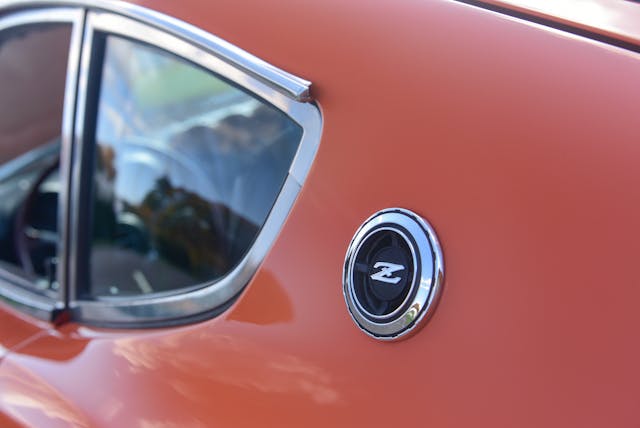
Decades passed, Fran found success in his work and owned fun classics, but eventually, he wanted to have a taste of those bygone days. He needed a 240Z in his life again. Leaning on his connections, Fran called up Dean Cusano, owner of Motorcars Incorporated.
Marketplace
Buy and sell classics with confidence
Dean’s shop specializes in Jaguar in E-Types. The work environment is a cross between an operating room and a showroom, where each occupant has been given a name (Fran takes credit for starting that trend).
Fran had learned about Dean years before while on the hunt for a Jag. He was told that Dean Cusano knew every nut, bolt, and quirk of the E-Type. Fran bought a 1968 Series 1.5 coupe from him. After driving it for a while, Fran convinced him to make some modifications. It was a hard sell, but Dean finally relented, and the Jag soon became known as “Enzo,” with a high-performance 4.2-liter race motor and a vanity plate: ENZO SEZ. Then, Fran had him modify another E-Type—“Lenny”—a 1967 roadster in Le Mans spec, again with a high-performance 4.2 race motor. Finally, there was “Charmaine,” a stock ’62 Series 1 roadster. Jaguars are how they became friends. Then Fran came to him with a special request, a bit outside of Dean’s normal area of expertise.
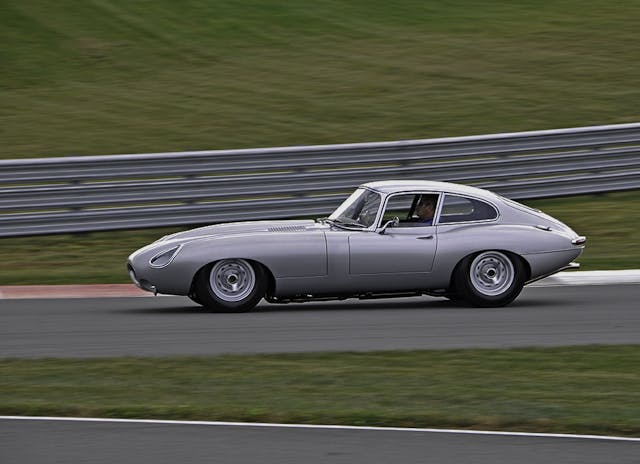
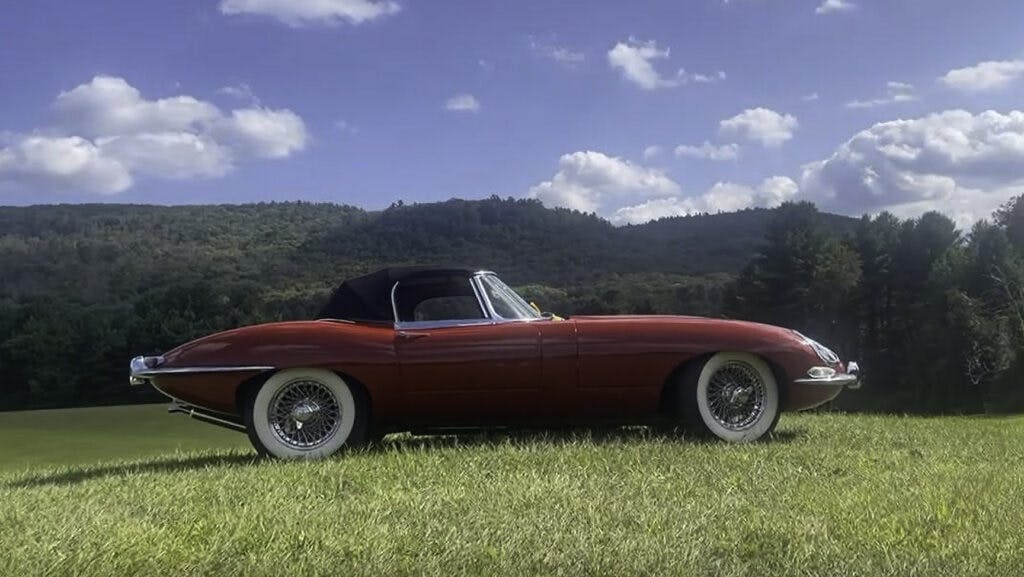
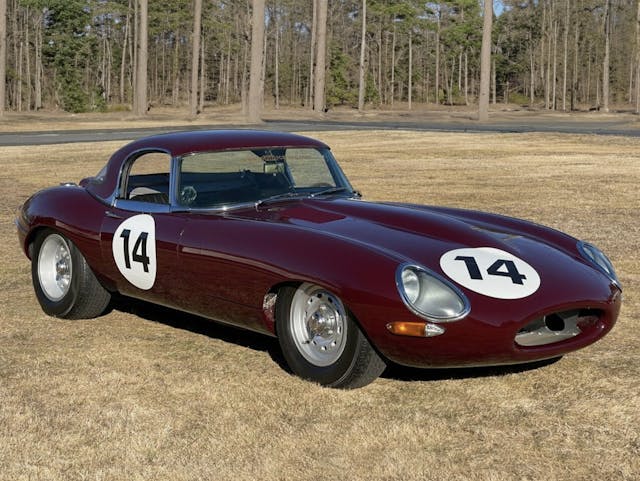
With that inescapable hankering for another Datsun, Fran asked Dean to find him the best 240Z he could. Dean discovered such a car on Bring A Trailer, a 1973 Arizona survivor with 41,000 original miles and not a speck of rust anywhere. They won the auction, and the car was shipped to Connecticut to start its transformation.
Fran and Dean sat down and started talking about the look of the car. Fran wanted to add flares and a wing on the back. He showed Dean numerous images of Zs with crazy stances and flared fenders, but Dean would have nothing to do with it. “Every snot-nosed kid does that sort of thing,” he told Fran. “If you want me to customize your car, I have to do it my way and not with bolt-on imitation crap. I’m going to do something that hasn’t been done before, and I’ll build you a bespoke, custom Z.”

Fran handed him the keys. “Do what you think is right,” he said. “Do it as if it were your car, and call me when it’s done.”
Despite being steeped in Jaguars, Dean had the chops to build a custom ride. In his younger days, he’d built custom cars with his late brother Joe, who was a hot rodder from the ’50s, so the custom design ethos was definitely in Dean Cusano’s DNA. Nothing was going to be bolt-on, and nothing was going to be easy. Dean was going to create the ultimate 240Z GT.
Of course, dropping a Japanese car into the middle of a shop that works on English cars might seem counterintuitive, but Dean had direct knowledge of Datsuns from racing his own 240 back in the day. To him, this was simply a Japanese Jaguar.

He had an idea for it, too, but he never made a single drawing. So, with an open checkbook, a mandate to create a one-of-a-kind Datsun, and the help of Bob Matcheski, an old hot rodder who worked in the shop, they got down to business.
Once they had the Z on jack stands, they started cutting off the sides. After that, they reworked the suspension and set the ride height to where they wanted it. When you lower a car, you lose travel, so instead of shortening the struts, they raised the towers, which would allow the big back tires to have 5 inches of travel. In the front, the car was lowered by utilizing racing coilovers and adjustable lower A-arms.
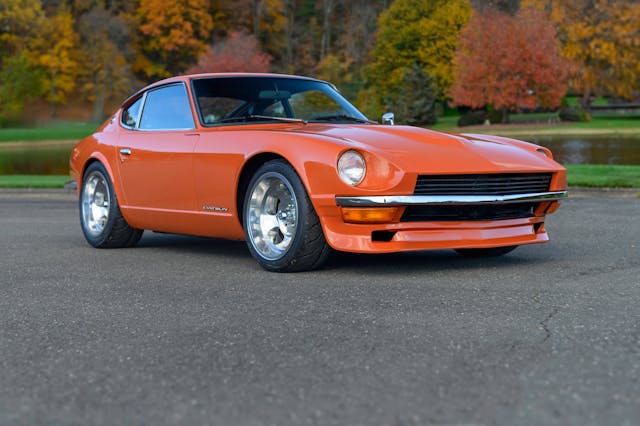
Next, they started rearranging things and placing them where they wanted them to be. This is how they decided on the width, the stance, where the fenders were going to go, and how the wheel arches were going to be altered. They also used an old hot rod trick and frenched the bumpers to make the body look wider.
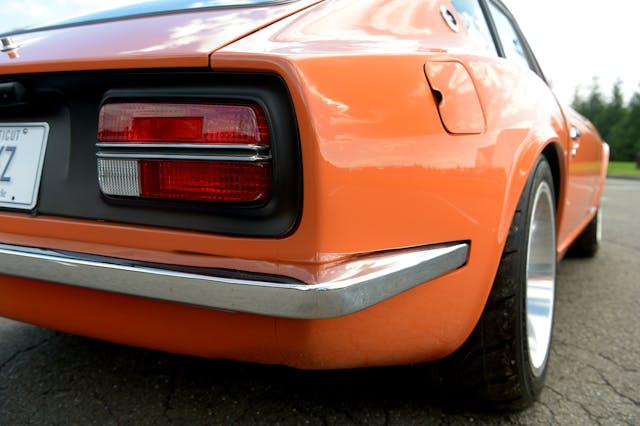
An original Z had 14 x 5.5-inch wheels, which would be too small for this build. But Dean also did not want this car to look like it had huge wheels stuffed beneath it, so they agreed on 17 x 11s and spent a lot of time making sure the arch of the tires fit into the arch of the wheel wells. The apertures of the wheel arches have been raised almost 2 inches in the front and 1.25 inches in the rear. Even though the Z is lowered 3.5 inches, with taller tires, it doesn’t look slammed. You don’t notice how radical it is until it’s sitting next to a stock 240Z. The idea was not to make it radical, however. The idea was “factory GT.”
Getting the Z to that idealized aesthetic was really a matter of Dean and Bob throwing ideas back and forth and then applying them to the car. In their skilled hands, it was a process requiring very few redos, and the whole project came together in a completely organic way.
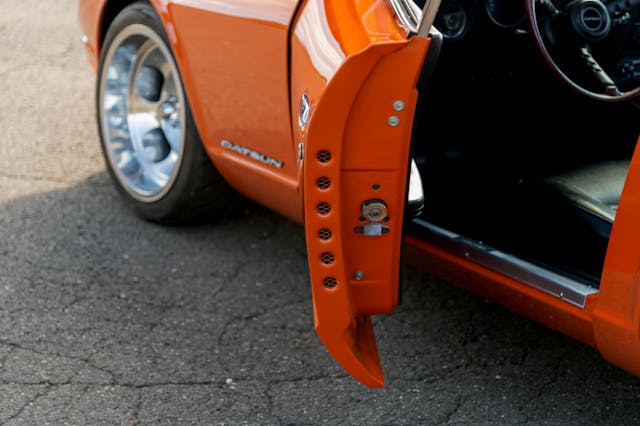
One thing about the original Z that Dean always hated was the door sills. “I couldn’t deal with the bottom of the door breaking that clean line of the rocker panel,” he says. “I had to change that.” The only thing to do was to create a custom door whose sheet metal reached all the way to the bottom of the rocker. In the end, the only panel that remained stock on this Z build was the rear hatch. The roof was altered when it was removed to add the rear crossbar. The hood was extended ¾ of an inch in the front to make it work with the widened front fenders, which then required redoing the headlight buckets. While they were at it, they welded them back without seams for a cleaner line. A lot of modifications and metalwork went into that ¾-inch change, but it was important to make the car look right.

The Z is now 4 inches wider overall, so the fenders were made 2 inches wider but not flared. The rear quarter panels, meanwhile, were tapered in, as on a Lamborghini Miura. The added width in the custom doors allowed them to run cooling channels through them to help take heat off the rear brakes.
Although Dean had the wheel size pegged at 17 x 11, he wanted to keep a semi-stock look with kidney bean wheels. Something like the Ansen Sprints, but much bigger. Try as he might, he couldn’t find anything that fit the bill, so he started talking with a wheel manufacturer in Australia. When they asked him how many wheels he needed, Dean told them four. “Sorry mate, we only do runs of 4000,” came the reply. “But we could make you some samples.” Deal! Dean got blank samples, drilled them for a Ford five-bolt pattern, and widened them to 11 inches. They are now backed by Wilwood brakes.

Under the hood, Dean and Bob went to great pains to conceal as much of the wiring as possible, and all the harnesses and relays were hidden. Of course, the engine itself couldn’t be left alone. The basis was a 2.8-liter block from the Datsun 280Z, to which they added a high-performance cam, Carillo rods and pistons, and triple 40-mm Mikuni carburetors with K&N filters. It is hooked up to a Tremec five-speed transmission, which makes the car an easy-driving cruiser.
Unlike the car’s exterior, however, the interior is stock. “I insisted that it remain stock,” Dean says. “In fact, every piece of the interior is original to the car except the carpeting.”
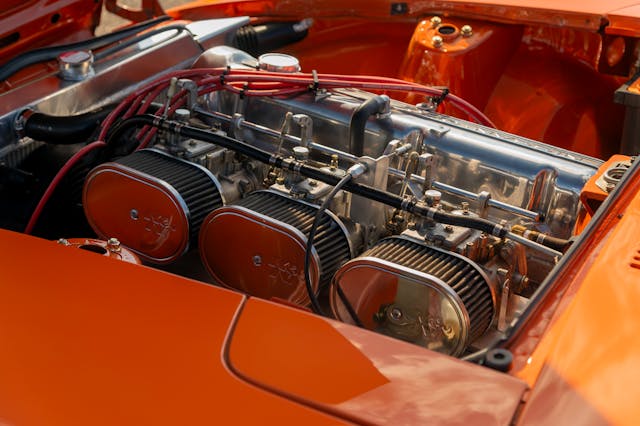
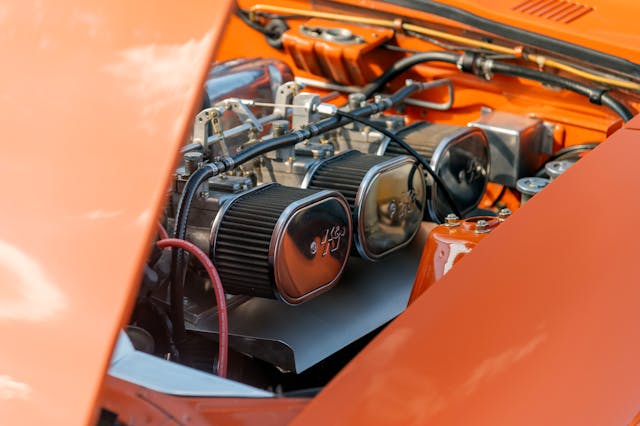

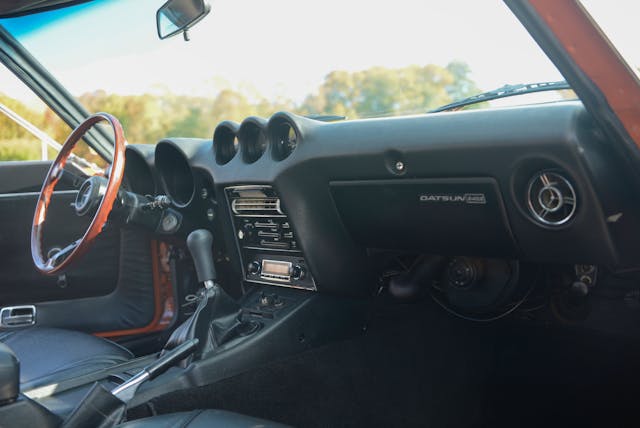
Dean and Bob built up the car to ensure everything fit properly, then took it all apart before turning the body over to Wayne Rollins of East Coast Motorsports to do the finish bodywork and apply a flawless paint job in Sight Orange.
The Z is now a bit more muscular, a bit more refined. Dean has taken a classic design and added some flair without taking away from the original, and in the process, he and Bob turned a great sports car into a world-class GT.
As a racer, Cusano has driven 240Zs and E-Types, and he knows their handling characteristics. “Those are long, skinny cars that push and lean a lot,” he says. To negate that, Bob adds, “We’ve made the car lower and wider, with a lower center of gravity.”
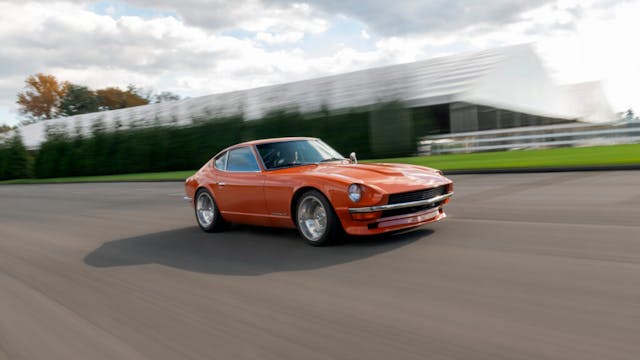
“It’s more neutral-handling and better balanced,” Dean says. “More like a C4 Corvette than the original.”
Dean and Bob made big changes from the original but never compromised the ride. They had a blast in the process, too, as each man appreciated the other’s talent and input while their ideas came together over 2000 hours of close work. Whatever Dean envisioned, Bob could weld into reality. “I loved every minute of the build. It was a fantastic experience,” Dean says. “Would I do it again? Not a chance.”
The biggest compliment Dean gets with the car comes when people walk by it at a show and don’t notice the difference. Then the people who know Zs see it and have their minds blown.

When he took delivery, Fran’s mind was blown, too. The car was simultaneously a blast from the past and beyond all expectations. He gave the Z a vanity plate with a nod to Yutaka Katayama, the man known as Mr. K, the father of the 240Z.
Many hours and many dollars went into creating a custom machine, which looks like it could have come from the factory. Ask Fran, though, and he’ll tell you that you can’t put a price on memories.
***
Check out the Hagerty Media homepage so you don’t miss a single story, or better yet, bookmark it. To get our best stories delivered right to your inbox, subscribe to our newsletters.
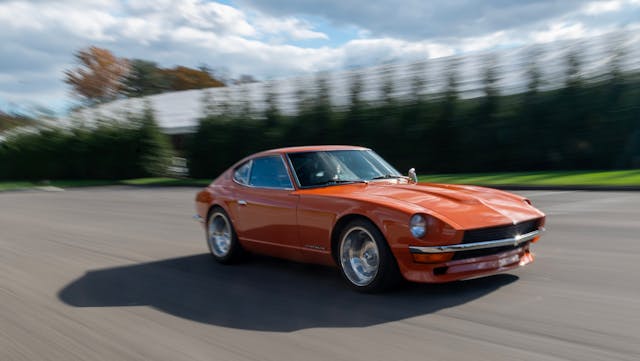
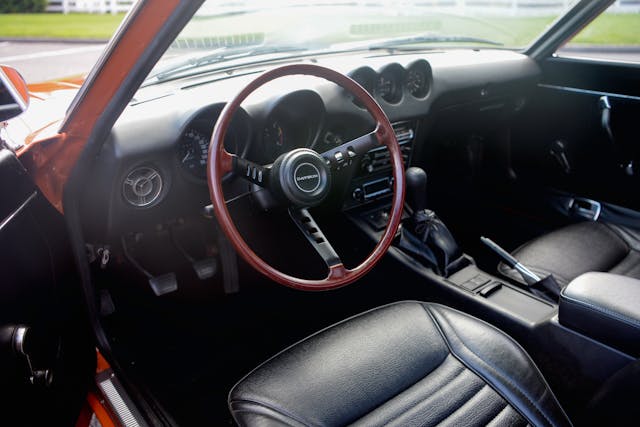

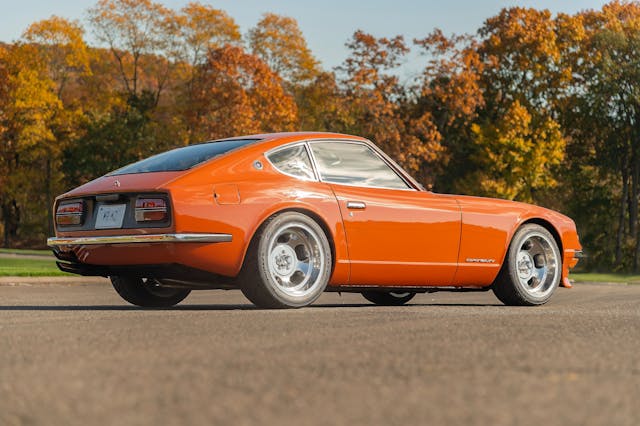

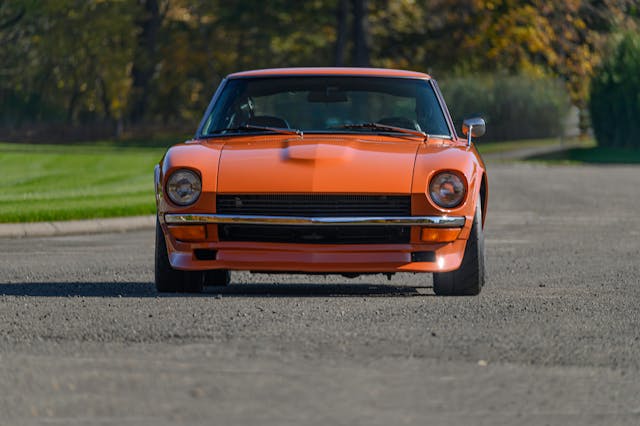
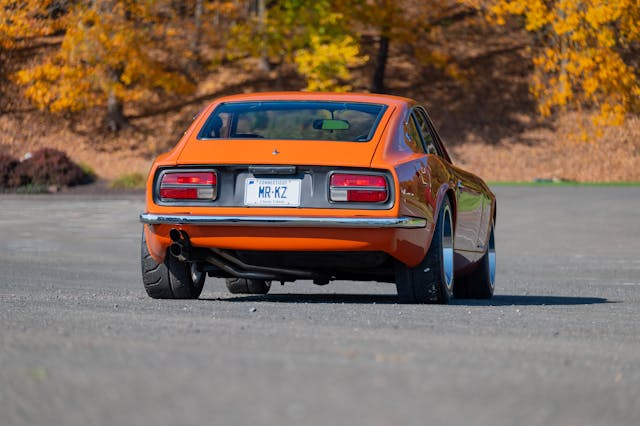
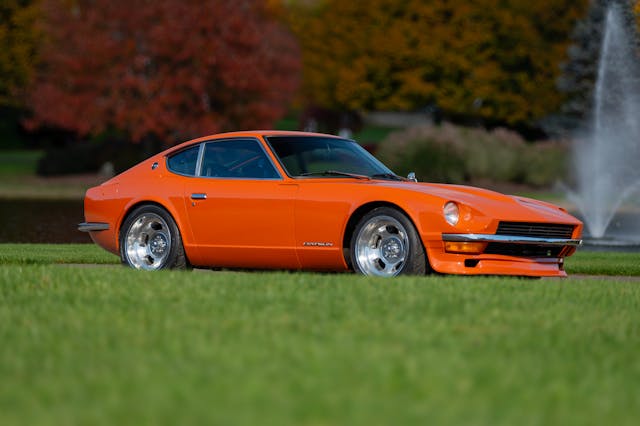

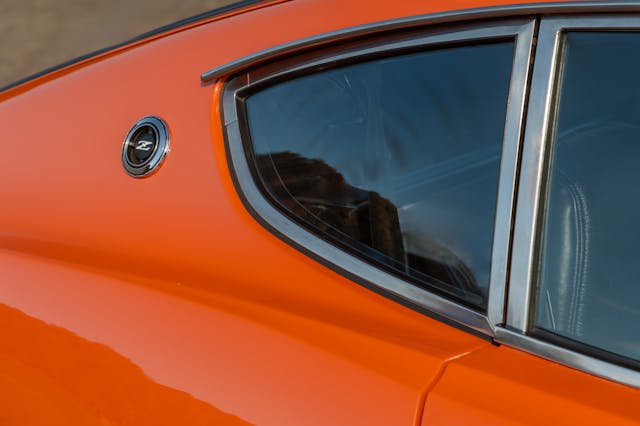




























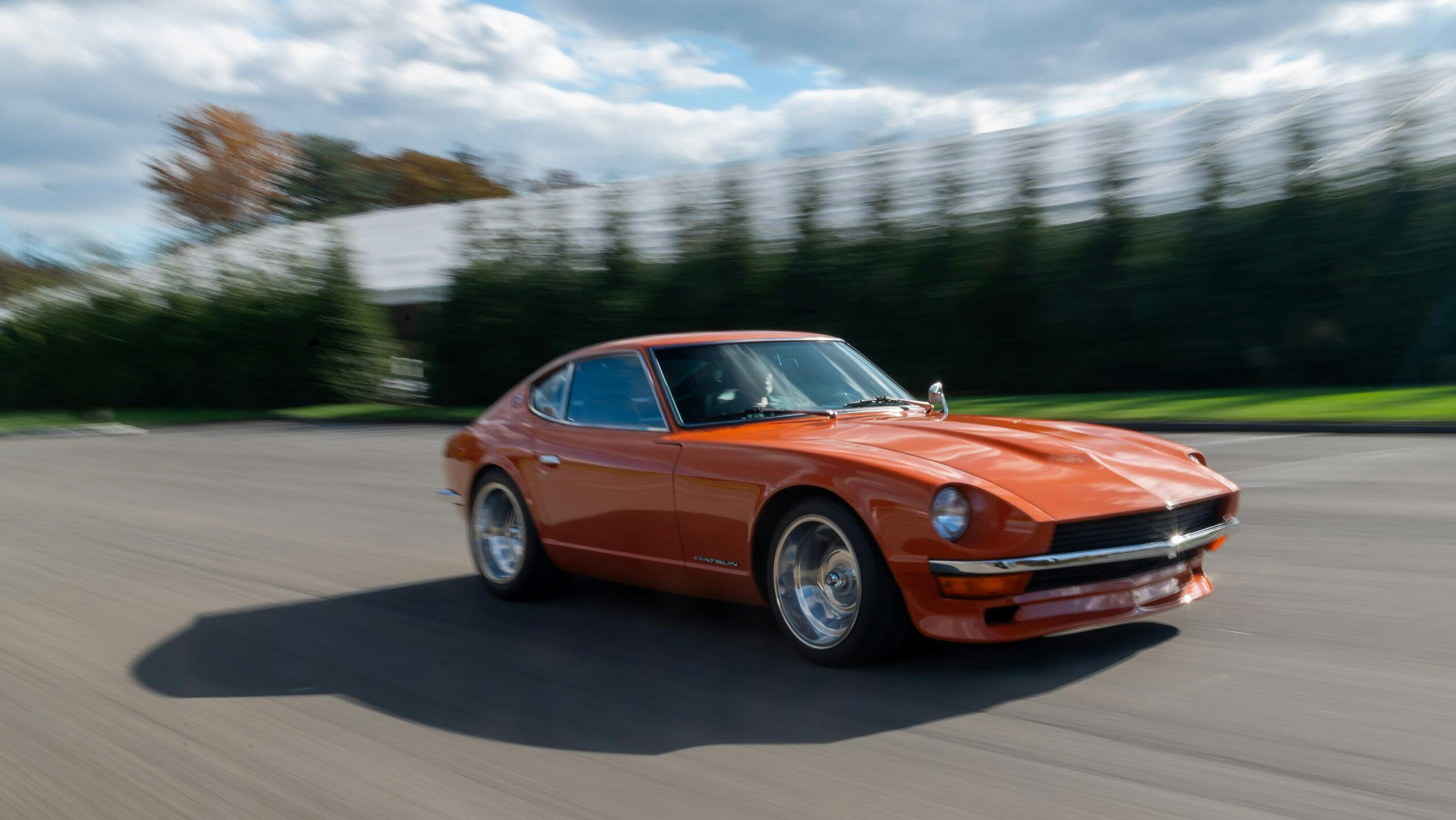
It must be amazing to be able to do anything “blank check”.
I’m not sure that I’d have gone so far with what are primarily cosmetics.
Since the car really was rust-free, leave the body alone; do some suspension improvements; brakes and maybe electrical; and then “tune” that baby.
You’d probably come in at less than half of what this cost.
I know — a guy’s free to do what he wants. And I’m sure I’d need a bib if i were to see this one close-up.
She is incredible.
Agreed – seems they didn’t need a pristine example to only save the hatch but no one’s arm got twisted.
It’s a beautiful car. I even like the color and I’m not really into orange cars.
1971. San Jose, CA Scarab 240Z conversions with Chevy 350. I think they were in business until 1980? Brian Morrow was the owner.
Good to see my old car back on the road. Widebody looks good.
Lessee – 2,000 hours at typical shop rates would be around $330,000. Well worth it, in my opinion.
Restraint is a lost art. Instead of a monstrosity like what say Liberty Walk would have done with this, you have the perfecting of an already great design. Subtle but gorgeous. And as for altering a great original condition car, I would agree if this was not a 240Z, of which there are plenty of survivors.
When I worked at BBS wheels in the 70’s we had a customer, Brian Morrow who built and sold Z Cars he called the Scarab. From the outside it looked like a Z Car with BBS wheels and Pirelli P-7’s but under the hood it had a 350 Chevy. A real sleeper!
Definitely a good looking car. I am not one of those “leave it stock” people. I say modify away. But I will never understand why would take a flawless car and cut it up to replace every single thing about it. There is no shortage of people out there that want stock cars to that would enjoy it as is. And there is no shortage of rotted out cars out there that need everything replaced on it. Save those instead of butchering the other ones. Especially when you are willing to throw around a blank check.
I’m amazed by the craftsmanship of this build but as a Z-obsessive myself, I’m horrified by the choice of that gear shift knob. A polished walnut gear shift knob would maintain the originality, match that gorgeous steering wheel and look like a sparkling gem amidst that perfect black interior.
Its funny how we obsessed with the slightest detail on the car, but never thought about the Gearshift Knob! good catch. That knob is what came with the Tremec Transmission and lever and we never gave it a second thought. a Period Correct aftermarket knob would be cool to adapt, thanks for noticing. Dean Cusano